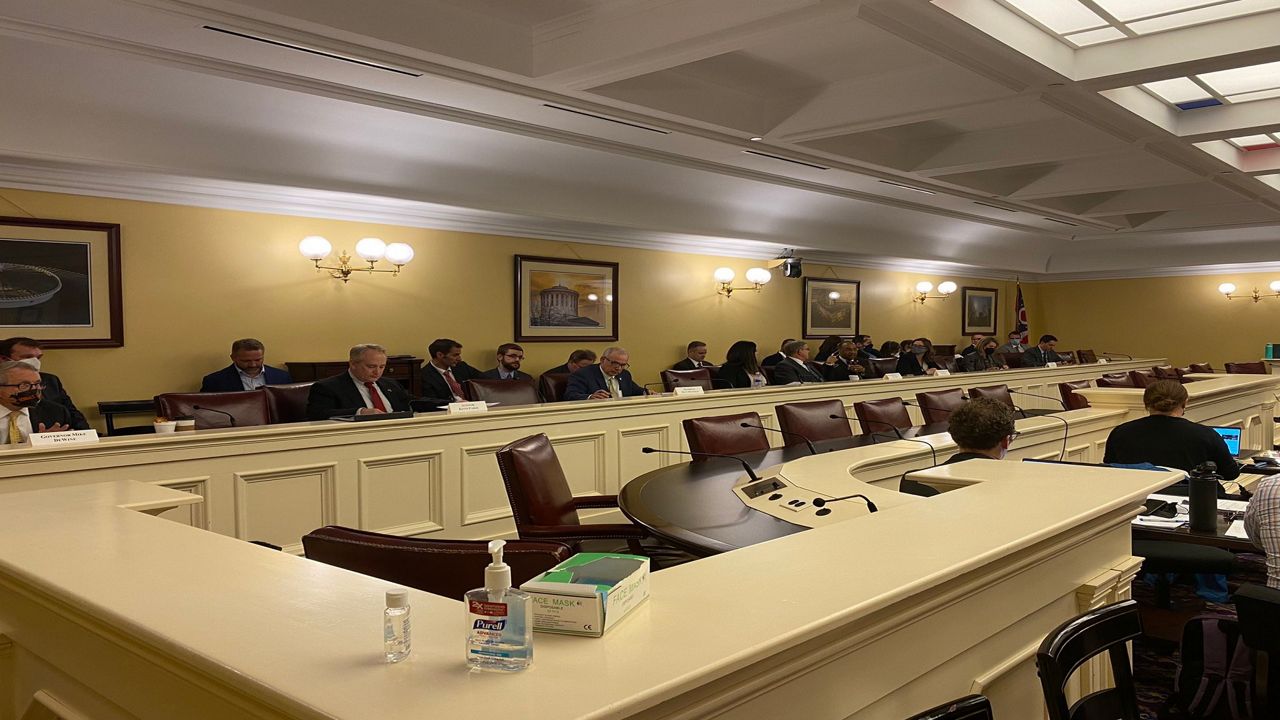COLUMBUS, Ohio — The Ohio Redistricting Commission will not submit finalized Ohio House and Senate maps before its court-imposed deadline, after the group of five Republicans and two Democrats voted 5-2 along party lines to not accept maps introduced by its Democrat members.
Coming into Thursday's meeting, Republicans on the commission said they had three options: Adopt bipartisan 10-year maps, adopt partisan four-year maps or announce they cannot do what the court has asked them to do and not adopt any maps.
While the two Democrats on the panel introduced maps they claimed were constitutional, State Senate President Matt Huffman claimed the boundaries for Ohio’s 99 House and 33 Senate districts were not drawn constitutionally.
.@matthuffman1 has questions about the maps. First asks about pairing of House Republican incumbents being drawn in together but not any for Dems. @Russo4Ohio says there is nothing in constitution that talks about Dems vs Republican districts @SpectrumNews1OH
— Josh Rultenberg (@JoshRultNews) February 17, 2022
Republicans did not offer an option of maps to adopt Thursday.
"Nope and nobody else has produced a constitutional map either," said Ohio House Speaker Robert Cupp, R-Lima.
"That's not true," rebutted Sen. Vernon Sykes, D-Akron.
"It sure became apparent that has a lot of constitutional flaws," said Cupp.
"Those are just accusations,” said Sykes. “Those are just accusations made by you."
The Ohio Supreme Court has twice rejected maps drawn by Republican members of the panel.
Ohio Gov. Mike DeWine said the order given by the Ohio Supreme Court made it impossible for the commission to draw constitutional maps.
"Whether we like the court order or don't like court order, we have obligation to try to follow it and we also have obligation to produce a map," said DeWine. "We did not do that and I think we should have produced a map. It might not have been everything that the court said but I think we could've got closer to what the court was ordering us to do."
With a May 3 primary looming, it is unclear what is next as county boards of elections will soon need to print absentee ballots for the primary.
Ohio Secretary of State Frank LaRose continued to say Thursday the state is getting dangerously close to violating federal law.
There are only four weeks left before ballots are supposed to be mailed overseas to the military, and a couple weeks later, early voting begins one month before the election.
LaRose said he spoke to all 88 county boards of elections to try and put them at ease as the state works through the situation.
"We need finality," said LaRose. "We need to decide quickly between approving a map that the court can find acceptable or the legislature wrestling with the tough challenges of deciding to change the day of the primary. There's just no in between."
A key point of contention was a provision of the constitutional amendment passed by Ohio voters that said no “plan” for districts can unduly favor or disfavor one particular party. Democrats contend the “plan” is each map — one for the Ohio House and one for the Ohio Senate — must be drawn to fairly represent Ohio voters.
“When there is a gerrymander that must be undone, which is currently the situation we are under and (with) the maps as they are today, some of the unfairly favored members will lose their seats,” Ohio House Minority Leader Allison Russo, D-Upper Arlington, said. “That is part of a gerrymandered map and districts.”
Huffman argued individual districts drawn to systematically unseat members of one party also serve that purpose.
“If, comprehensively, this district plan favors or disfavors a political party, it is unconstitutional,” he said.
The decision on how to move forward is in the hands of the Ohio Supreme Court.
Jen Miller with the League of Women Voters of Ohio, one of the plaintiffs in these legislative redistricting lawsuits, said her organization will be filing an objection with the court.
Miller said the league will explain all the ways that it is possible to draw fair maps unlike the commission said.
"If we really wanted to grapple with the Ohio Constitution and we really wanted to make the maps that the Ohio voters deserve, then we would've started this process a lot earlier, we would've had lots of nonpartisan experts explaining things like proportionality and the Voting Rights Act,” said Miller. “Instead, what we see quite frankly is an oversimplified understanding of the law that they are using to make excuses."









